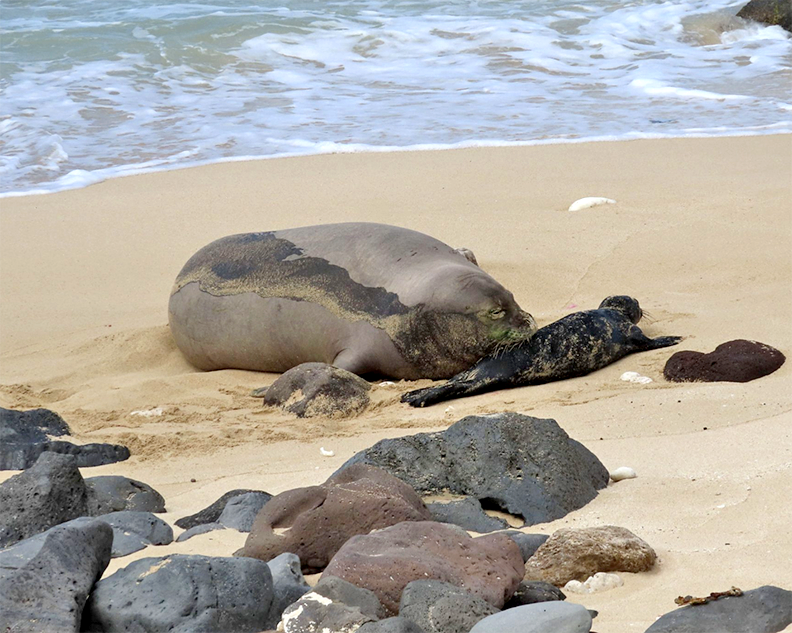By Jan TenBruggencate
The father of a friend of mine had an interesting quirk: He would not plant anything in his yard unless it was edible.
If there was a tree, it was a fruit tree. If there was a shrub, it had edible berries.
I actually don’t know whether he had a grass lawn, or whether there was some edible ground cover, but I appreciated his commitment.
It reminds me of the fascinating concept of the canoe plants – the array of botanical species that Polynesian voyagers carried with them from island to island to ensure their survival.
They weren’t all edible plants, certainly, although many of them were. The list included fiber plants, medicinal plants, ceremonially important plants and others.
But a remarkable number were multiple threats. They fitted in numerous categories.
Hau, as an example, made valued cordage. The great cables that were woven to try to save Hawai‘i’s royal yacht when it went up on the reef at Hanalei – they were fashioned of the inner bark of hau.
Hau also has lightweight wood that was used in canoes, fishing floats and house timbers. It had medicinal uses, and the flowers are edible, if not too palatable.
Ti, another canoe plant, could be used for thatching, for weaving, for wrapping food, and the baked root of the ti plant was a sweet confection. In later years ti root extract was used to make a prized alcoholic beverage, okolehao.
But it is unlikely that there was a plant more suited to living and surviving in the tropics than the coconut palm.
Its value to early Pacific cultures is hard to overstate.
I can remember talking with the great Hawaiian artist Herb Kawainui Kane. We were at the dock at Nawiliwili as the voyaging canoe Hokule‘a was towed in after one of its hulls swamped in the Ka‘ie‘ie Channel. Kane had designed the canoe.
I asked him how early voyagers would have prevented or responded to a catastrophic swamping.
Kane answered quickly. The early voyaging canoes were made of wood, and would naturally float, unlike the wood and fiberglass Hokule‘a. And any voyaging canoe would have been loaded with buoyant coconuts, which would have added lift, he said.
But in addition to the buoyancy of the nuts, they provided pure nutritious fluid that was fresh and sweet, even if the tree was growing in nearly pure salt water. The inner nut was hard and could be used for implements. The fiber in the husk could be woven into a kind of rope called sennit, which was resistant to salt water and was used to lash canoes.
The meat of the coconut could be eaten at any stage, and could be processed into coconut cream or coconut oil.
Coconut fronds could thatch a house–not the most durable thatching material, but the quickest and easiest to collect and install. The leaflet midribs were used to string kukui nuts for torches. The fronds could be woven into hats and baskets and toys.
I learned on the island of Atiu in the Cook Islands that coconut bark works as a natural insect repellent if burned like a mosquito punk.
And those are just a few. The coconut’s values run far beyond its swaying grace against the sunset in a tropical breeze. In fact, that is the one modern value that early Polynesians may never have valued at all.
- Jan TenBruggencate is a Kaua‘i based writer and communications consultant.
Discover more from ForKauaiOnline
Subscribe to get the latest posts sent to your email.





Leave a Reply